Last-Minute NYC Holiday Gift Guide 🎁
We’ve created a holiday gift guide with presents for the intrepid New Yorker that should arrive just in time—


Kodiak bear and keeper, Bronx Zoo, December 18, 1905. The WCS historical photo collection is a priceless resource for exploring how animal care has changed over time. Photo © WCS.
Attention vintage photo buffs! A $16,674 grant from the New York State Program for the Conservation and Preservation of Library Research Materials
will clean and archive 12,000 glass slide and film photo negatives from the Bronx Zoo and New York Aquarium dating from 1899, when the zoo was founded to 1930. The Wildlife Conservation Society, which operates both locations, notes in a press release that the 12,000 negatives are just a portion of the 70,00o+ images in the collection. There is also a hope to eventually digitize the collection.The photographs in the collection include, as the release describes, “exceptional historic views of the Bronx Zoo and the New York Aquarium including, the first animals housed there, early exhibits, staff, visitors, and some international locations where WCS, then named the New York Zoological Society, undertook fieldwork.” The Wildlife Conservation Society has shared 21 images to the public as a sampling of the collection, which include photos of now-extinct species, buildings no longer standing, and even Eskimo dogs from Robert Peary’s Arctic expedition in 1898, donated to the Bronx Zoo:

Peary’s dogs at the Bronx Zoo, October 1902. Following Robert Peary’s 1898-1902 Arctic expedition, Peary’s Arctic Club donated four dogs to the Bronx Zoo, including his celebrated dog Bridge. These dogs helped Peary travel farther north on land than anyone had before. Bridge and his mate, White Face, lived out their days at the Bronx Zoo, producing several litters of pups. Photo © WCS.

This is the first photograph in WCS’s collection. The photographer, Rudolph Kersting, took many of WCS’s early photographs before the development of WCS’s first photo department in 1901 under the direction of the first staff photographer, Elwin Sanborn. Photo © WCS.
 Barbary lion Sultan in the Bronx Zoo’s Lion House, April 1903. Now extinct in the wild, Barbary lions once roamed North Africa. Sultan was one of the most famous animals in the early Bronx Zoo. He was among the earliest residents of the Bronx Zoo’s Lion House and a popular subject for artists and sculptors. According to the society’s November 1914 Bulletin, Sultan had a “particularly fine mane of rather a dark hue, which pleases the sculptors and painters because it is not too abundant, and does not mask the muscles of the shoulder.” Photo © WCS.
Barbary lion Sultan in the Bronx Zoo’s Lion House, April 1903. Now extinct in the wild, Barbary lions once roamed North Africa. Sultan was one of the most famous animals in the early Bronx Zoo. He was among the earliest residents of the Bronx Zoo’s Lion House and a popular subject for artists and sculptors. According to the society’s November 1914 Bulletin, Sultan had a “particularly fine mane of rather a dark hue, which pleases the sculptors and painters because it is not too abundant, and does not mask the muscles of the shoulder.” Photo © WCS.

Barbary lion cubs at the Bronx Zoo, May 1903. The offspring of Barbary lions Sultan and Bedouin Maid, these cubs were the first to be born at the Bronx Zoo. Photo © WCS.

Cyclone the grizzly bear, Bronx Zoo, December 1901. Cyclone was a popular animal in the early years of the Bronx Zoo. The zoo’s first director, William T. Hornaday, called him “really a fine-spirited dignified little grizzly.” Photo © WCS.
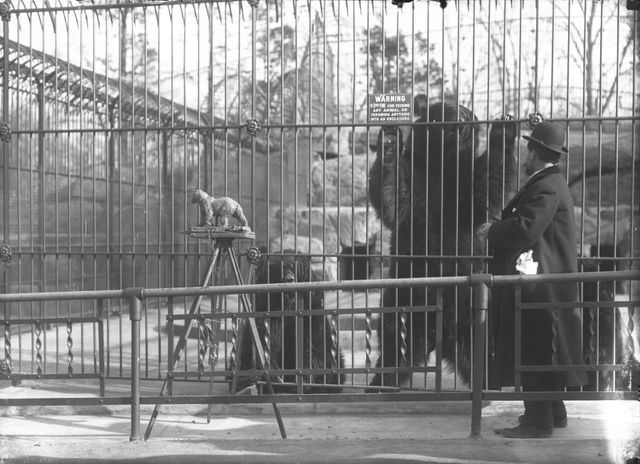
Unidentified sculptor and his model at the Bronx Zoo bear dens, February 1906. Photo © WCS.

Bison and young at the Bronx Zoo, July 1907. Just months after this photo was taken, in October 1907, the American Bison Society would ship 15 bison from the Bronx Zoo’s herd to the Wichita Game and Forest Reserve in Oklahoma. This was the first step in a successful multi-year effort to repopulate the bison of the American West. Photo © WCS.
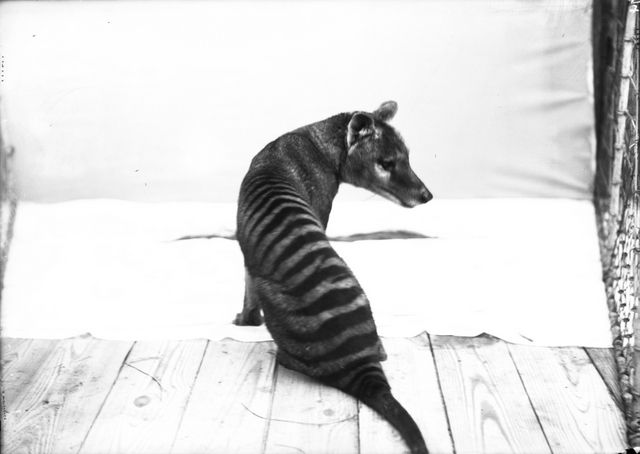
Pictured here is the first of four thylacines who lived at the Bronx Zoo between 1902 and 1919. The Bronx Zoo and Smithsonian National Zoo are the only two zoos in the U.S. to ever exhibit this now extinct species. The last known thylacine died at the Hobart Zoo in Tasmania in 1936. Photo © WCS.

Axis deer herd at the Bronx Zoo, October 1907. Photo © WCS.

Three-toed sloth at the Bronx Zoo, around 1907. Photo © WCS.
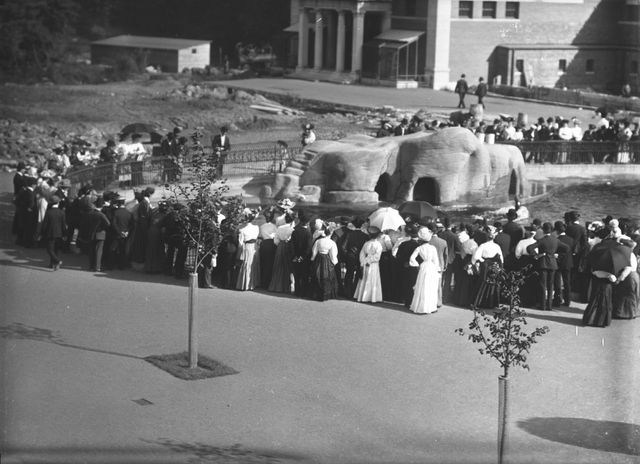
Visitors at the Sea Lion Pool, Bronx Zoo, 1905. Photo © WCS.

Feeding the sea lions, Bronx Zoo, 1905. Since the sea lion pool opened in 1905, it has been one of the Bronx Zoo’s most popular exhibits. In the background, you can see the old Bird House, which was constructed in the same year. Photo © WCS.
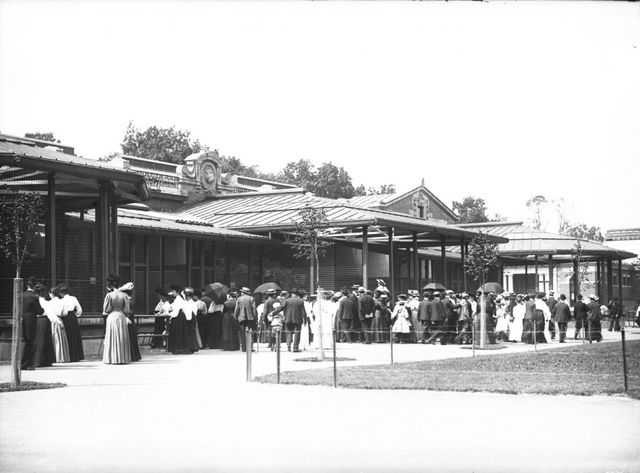
The clothes may have changed, but a crowd of visitors on a Sunday is still a familiar site at the Bronx Zoo. Photo © WCS.

Black-footed ferret at the Bronx Zoo, July 1905. During the nineteenth century, black-footed ferrets numbered in the tens of thousands, but by the 1960s, their populations stood on the brink of extinction due to habitat loss and disease. Since the 1980s, American zoos have been breeding the species for reintroduction in the American West. Photo © WCS.
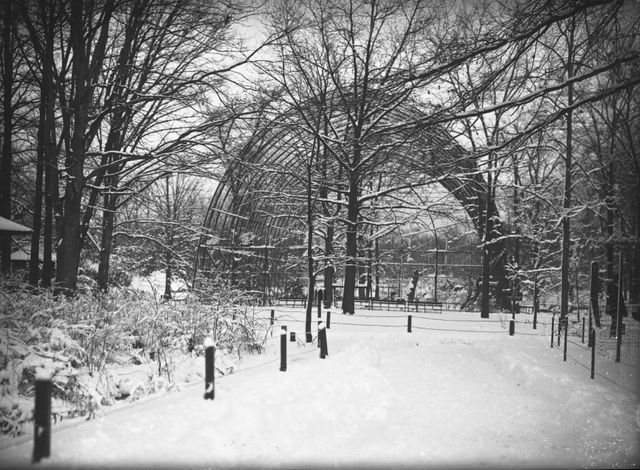
Bronx Zoo flying cage, January 1903. Known today as the Sea Bird Aviary, the flying cage has existed in various manifestations since it first opened in 1900. In 1995, a much bigger winter storm than the one pictured here caused the original flying cage to collapse. Photo © WCS.

New York Aquarium, around 1905. The New York Aquarium opened at Castle Clinton in 1896, and in 1902, WCS assumed its management from New York City. Before it was the New York Aquarium, Castle Clinton had served as a US Army fort, an entertainment center, and an immigration station. Photo © WCS.
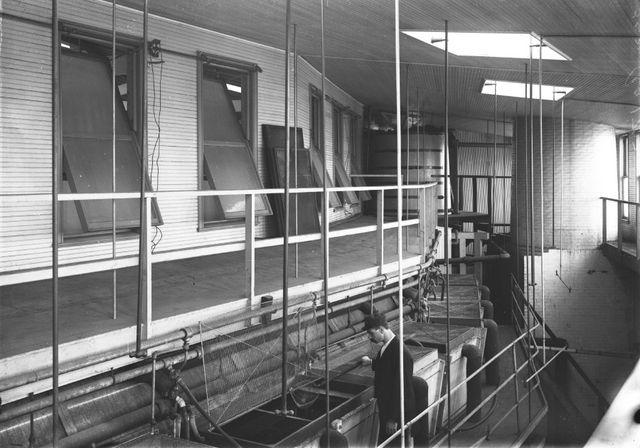
Staff member working behind the scenes at the New York Aquarium, around 1905. Photo © WCS.

Fish hatchery at the New York Aquarium, around 1905. Each year, the New York Aquarium’s fish hatchery produced several millions of young food and game fishes that were deposited in New York State waters. Photo © WCS.
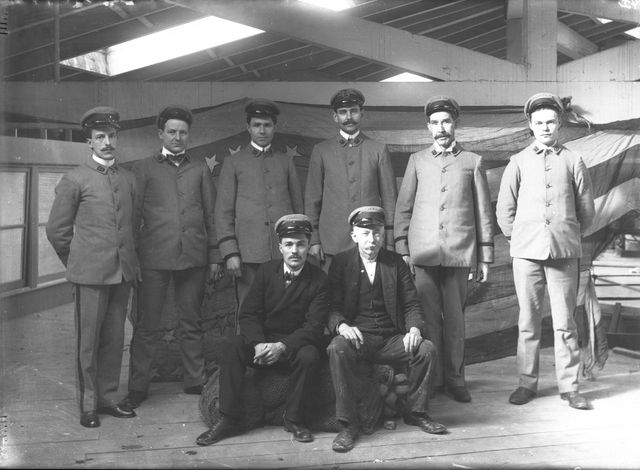
New York Aquarium staff members, around 1905. Photo © WCS.

Seal of the New York Zoological Society, February 1903. The first seal of WCS (known originally as the New York Zoological Society) was designed by the well-known wildlife artist Charles Knight. The ram’s head reflected the society’s early interest in the conservation of North American animals. Photo © WCS.
Next, check out vintage photographs of the Central Park Zoo.
Subscribe to our newsletter